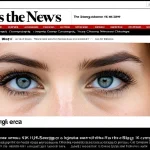Evolution of UK Women’s Fashion Styles: A Decade-by-Decade Overview
The UK women’s fashion history unfolds as a dynamic journey shaped by shifting cultural, social, and economic landscapes. From the elegance of Edwardian dresses to the eclecticism of modern times, the evolution of British style reflects how societal values and technological advances influence clothing.
Decade fashion trends in the UK often mirror larger movements. The early 20th century emphasized structured silhouettes, while the 1920s introduced liberated forms like flapper dresses, responding to changing roles for women. The 1930s and 1940s saw glamour tempered by wartime utility, with fabric rationing prompting practical clothing innovations.
Have you seen this : What Accessories Are Essential for UK Women This Season?
Post-war decades brought youth culture’s boldness with the 1960s mod fashion revolution, marked by shorter hemlines and vibrant patterns. In the 1970s and 1980s, individualism thrived through punk style Britain and power dressing, capturing distinct cultural moods.
The 1990s and 2000s witnessed minimalism paired with rising UK high street brands, making fashion more accessible and fast-paced. Today’s scene blends sustainability and digital fashion influence, underscoring conscious consumption while celebrating vintage revivals.
Also to read : What are the key differences in fashion preferences between UK women and other countries?
This timeline offers insight into how British style continually adapts, balancing tradition and innovation to meet the needs of each new generation.
The Early 20th Century: Edwardian through the Roaring Twenties
In the early 20th century, UK women’s fashion history was defined by graceful Edwardian silhouettes. Characterised by corseted waists, high necklines, and flowing skirts, this era valued formality and intricate detailing. Rich fabrics such as silk and lace were popular, reflecting Edwardian fashion’s elegance.
The outbreak of World War I triggered a major shift. Practicality supplanted opulence in the evolution of British style. Women adopted simpler, more functional attire suitable for work and wartime roles, marking a clear departure from previous restrictions.
By the 1920s, decade fashion trends embraced liberation. The flapper dresses—with their dropped waists, shorter hemlines, and freer shapes—symbolised newfound social freedoms for women. Influenced by Art Deco aesthetics, these styles introduced embellishments like sequins and beads, further distinguishing the 1920s UK women’s style.
This transformation reflected broader cultural changes: women’s roles evolved rapidly, instigating a permanent redefinition of fashion norms. The shift from Edwardian formality to 1920s boldness underscores how social developments directly impacted British style, setting the tone for future decades.
1930s–1940s: From Sophistication to Wartime Utility
The 1930s glamour in UK women’s fashion was defined by elegant cuts and luxurious fabrics like silk and velvet, emphasizing a slender silhouette with bias cuts that enhanced natural curves. Evening gowns often featured intricate draping and embellishments, reflecting Hollywood’s influence on British style. This period’s UK women’s fashion history illustrates a shift from the playful flapper looks of the 1920s to refined sophistication.
However, the advent of World War II radically transformed clothing. Wartime rationing imposed limits on fabric, leading to the creation of utility clothing UK—practical, standardized garments designed to conserve resources while maintaining style. Utility clothing emphasized function, with minimal embellishments and durable materials, a stark contrast to prior opulence.
The cultural impact of war fostered a new mindset in fashion: clothing needed to be both economical and presentable, reflecting societal resilience. Post-war recovery saw a slow return to glamor but retained practical elements learned during wartime. This era’s decade fashion trends reveal how external pressures shape style, blending necessity with a revived elegance characteristic of early British fashion evolution.
1950s–1960s: New Femininity, Youthquake, and Mod Culture
The 1950s fashion UK era marked a return to polished femininity after the austerity of wartime. Silhouettes emphasized the hourglass shape, with cinched waists and full skirts crafted from luxurious fabrics such as silk and taffeta. Accessories like gloves and hats completed the refined look, reflecting post-war optimism and traditional gender roles.
However, the 1960s British Mod movement radically shifted the scene, driven by youth culture style that embraced bold colors, geometric patterns, and innovative materials like PVC. Mary Quant became a pivotal figure, popularizing the miniskirt, which symbolized freedom and rebellion against conventional norms. This era, dubbed Swinging London, positioned the UK at the forefront of global decade fashion trends, influencing music, art, and lifestyle.
Societal changes fueled the rapid evolution of British style during these decades. The contrast between 1950s formality and 1960s youthful exuberance illustrates how cultural dynamics shaped fashion. From the structured elegance of the 1950s to the playful, avant-garde expressions of the 1960s, this period highlights a significant chapter in UK women’s fashion history where innovation met tradition to redefine femininity and youth identity.
1970s–1980s: Individualism and Subculture Statements
The 1970s UK fashion scene embraced bold self-expression, merging decade fashion trends with cultural movements. Bohemian styles with flowing fabrics and earthy tones contrasted the glam rock look, which featured glitter, metallics, and dramatic makeup. This era marked a turning point in the evolution of British style, driven by youth rebellion and artistic exploration.
Punk style Britain emerged in the late 1970s as a stark rejection of mainstream culture. Vivienne Westwood played a pivotal role, designing torn garments, safety pins, and provocative graphics that defined punk’s raw aesthetic. This subculture merged fashion and activism, influencing global perceptions of UK women’s fashion history by challenging societal norms and celebrating individuality.
Entering the 1980s, power dressing became synonymous with women asserting influence in the workplace. Sharp tailoring, exaggerated shoulder pads, and bold colours dominated 1950s fashion UK‘s more conservative roots by evolving into assertive silhouettes. This decade underscored fashion’s role as a confidence tool, linking style with career ambitions and modern femininity.
Together, these two decades illustrate how UK style continually oscillates between cultural expression and socio-economic shifts, reinforcing the evolution of British style through distinct, impactful decade fashion trends.
1990s–2000s: Minimalism, High Street Explosion, and Vintage Revivals
The 1990s minimal style marked a shift toward pared-down silhouettes and neutral tones, reflecting a preference for simplicity amid celebrity-driven influences. Designers like Calvin Klein and brands in the UK helped popularise this clean aesthetic, appealing to those seeking understated elegance in everyday wear.
As UK high street brands rose to prominence, fashion became more accessible and fast-paced. Retailers such as Topshop and River Island offered trend-focused collections that responded swiftly to consumer demand. This expansion fueled a democratization of style, linking the evolution of British style directly to affordability and variety.
The turn of the millennium saw growing enthusiasm for vintage fashion trends. Consumers mixed retro pieces with contemporary items, celebrating nostalgia while embracing modernity. This blend honoured past decades’ iconic looks and introduced sustainability within fashion consumption. The popularity of vintage also emphasized cyclical decade fashion trends, revealing how history continuously informs current UK women’s fashion history.
Together, these developments illustrate a decade where minimalism, mass-market innovation, and reverence for past styles reshaped the landscape, reflecting evolving cultural attitudes and economic shifts during the late 20th and early 21st centuries.





